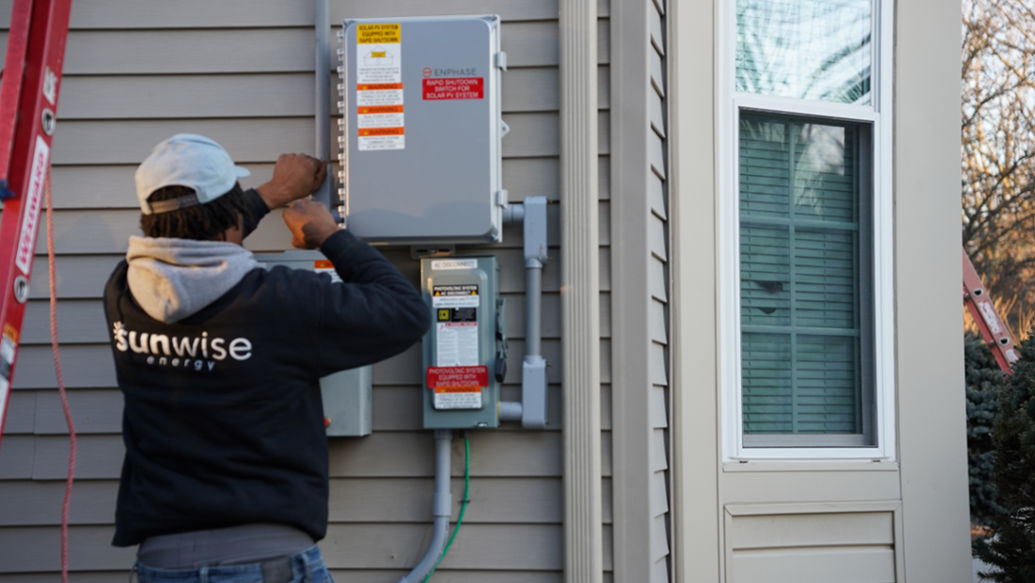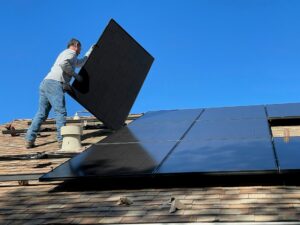A 12V solar battery charger is a practical and sustainable way to keep your batteries powered up using sunlight. These chargers convert solar energy into electricity, offering a reliable solution for recharging 12V batteries in various scenarios. Whether for recreational use, off-grid living, or emergencies, they provide a dependable energy source without relying on traditional power.
The benefits of using solar energy go beyond convenience. It’s an environmentally friendly alternative that reduces dependency on fossil fuels and lowers electricity costs. For anyone seeking an efficient, portable, and green way to maintain their battery power, a 12V solar battery charger is a smart choice. If you’re unsure where to start, consulting a reputable solar installation company can help you design a reliable system tailored to your needs.
What is a 12V Solar Battery Charger?
A 12V solar battery charger is a device designed to recharge 12V batteries by harnessing sunlight. It works by collecting solar energy through panels, converting it into usable electricity, and delivering that power directly to the battery. This simple yet effective system ensures your battery stays charged without the need for traditional electricity sources.
These chargers are widely used in various applications. They’re popular among RV owners for powering appliances during road trips, essential for boats to keep electronics functioning, and indispensable in off-grid systems where solar energy is the primary power source. With their versatility and ease of use, 12V solar battery chargers have become a go-to solution for portable and sustainable energy.
Key Components of a 12V Solar Battery Charging System
Solar Panel
The solar panel is the powerhouse of your 12V solar charging system. Its job is to absorb sunlight and convert it into electricity to charge your battery. The size of the solar panel is crucial for the system’s efficiency. As a general rule, the panel’s output should be 1.5 to 2 times the capacity of your battery. For instance, if you have a 100Ah battery, a solar panel producing 150 to 200 watts is a good fit. This ensures your battery charges effectively, even in less-than-perfect weather conditions.
Charge Controller
The charge controller acts as the system’s gatekeeper, regulating the electricity flow from the solar panel to the battery. It prevents overcharging, which can damage the battery, and ensures the charging process is safe and efficient. There are two main types of charge controllers:
- PWM (Pulse Width Modulation): A cost-effective option suitable for smaller systems.
- MPPT (Maximum Power Point Tracking): A more advanced option that maximizes energy harvest and works well with larger setups or in colder climates.
Selecting a controller that matches your battery type (lead-acid or lithium-ion) is essential for optimal performance.
Battery
The battery stores the electricity generated by the solar panel, making it available whenever needed. There are two common types of batteries that is being used in solar:
- Lead-Acid: Affordable and widely available but requires careful maintenance and charging.
- Lithium-Ion: More expensive upfront but offers higher efficiency, longer life, and faster charging.
Each battery type has different charging requirements, so it’s essential to choose components compatible with your specific battery.
Types of 12V Solar Battery Chargers
Portable Chargers
Portable 12V solar chargers are a go-to option for adventurers and those who value mobility. Perfect for RVs, boats, or camping setups, these chargers are lightweight, compact, and easy to transport. They provide enough power to recharge essential devices or maintain battery health while you’re on the move. Their portability makes them ideal for situations where flexibility is key, such as setting up camp in different locations or keeping a boat battery charged at the dock.
Fixed Chargers
Fixed 12V solar chargers are designed for more permanent installations, like off-grid systems or home setups. These chargers are typically paired with larger solar panels and battery systems to provide consistent power over extended periods. Fixed chargers excel in reliability, offering a robust energy solution for people looking to reduce dependency on traditional electricity grids. While less portable than their counterparts, they are built for efficiency and long-term use.
Flexible Panels vs. Rigid Panels
When choosing a 12V solar charger, the type of panel matters. Flexible panels are lightweight and can bend slightly, making them perfect for uneven surfaces like curved roofs or backpacks. They are highly portable but may lack the durability of rigid panels.
On the other hand, rigid panels are sturdier and better suited for permanent installations. They can withstand harsh conditions, like heavy winds or prolonged sun exposure, and often provide higher efficiency. Deciding between the two depends on your needs—flexibility and portability versus durability and performance.
How to Charge a 12V Battery with Solar Panels
Connecting the Charge Controller
Begin by connecting the charge controller to the battery. Use wires with the appropriate gauge—10 or 16 AWG is recommended for safe and efficient energy transfer. Always double-check the polarity (positive and negative connections) to avoid damaging your system. Secure the connections tightly to prevent any loose wires from causing issues.
Attaching Solar Panels
Once the charge controller is connected to the battery, link the solar panel to the charge controller. Correct polarity is crucial here too—match the positive and negative terminals as marked. A secure connection is vital to maintain efficiency and safety.
Positioning the Solar Panel
To get the best results, position the solar panel in direct sunlight. Ideally, place it at an angle that maximizes exposure throughout the day. For fixed installations, consider the typical sun angle in your location. Portable setups can be adjusted as needed to follow the sun.
Monitoring Charging Progress
The charge controller’s display, if available, provides valuable information about the charging status. Monitor this regularly to ensure everything is functioning as expected. For lead-acid batteries, charging is complete when the voltage reaches 12.6V to 12.8V. Lithium-ion batteries may have different indicators, so check the manufacturer’s guidelines.
Additional Tips for Effective Solar Battery Charging
Best Practices for Maintaining Batteries
Taking care of your battery is key to extending its lifespan and ensuring reliable performance. Start by keeping the battery clean and free of dust or corrosion, especially around the terminals. Corrosion can interfere with connections and reduce efficiency. If you’re using a lead-acid battery, check the electrolyte levels regularly and top them up with distilled water if needed. For lithium-ion batteries, focus on using the right charge controller to avoid overcharging or deep discharging.
Importance of Regular System Checks
A quick inspection of your solar setup can save you from unexpected issues. Check the solar panel for dirt, debris, or damage that might block sunlight. Inspect the wires and connectors to ensure there are no loose or frayed connections. It’s also a good idea to review your charge controller’s settings and display to confirm everything is running smoothly. Regular system checks help you catch small problems before they become costly repairs.
Common Mistakes to Avoid
Even a well-thought-out system can run into trouble if you overlook a few details:
- Mismatched Components: Ensure your solar panel, charge controller, and battery are compatible in terms of voltage and capacity. Using mismatched parts can lead to inefficiency or even damage your system.
- Improper Wiring: Double-check all connections for correct polarity and secure attachment. Loose or incorrectly wired components can cause short circuits or reduced performance.
- Neglecting Battery Monitoring: Failing to monitor your battery’s charge levels can result in overcharging or deep discharging, both of which shorten the battery’s life.
Efficient 12V Solar Charging Starts Here
While we at SunwiseUSA don’t list 12V solar battery chargers directly on our site, these essential components are a key part of our solar installations. Designed for efficiency and reliability, we help create sustainable energy solutions tailored to a variety of setups, from homes to RVs and off-grid systems. For expert advice or to learn how these systems can meet your energy needs, get in touch with us at SunwiseUSA. Let us guide you toward a greener, more energy-independent future.







